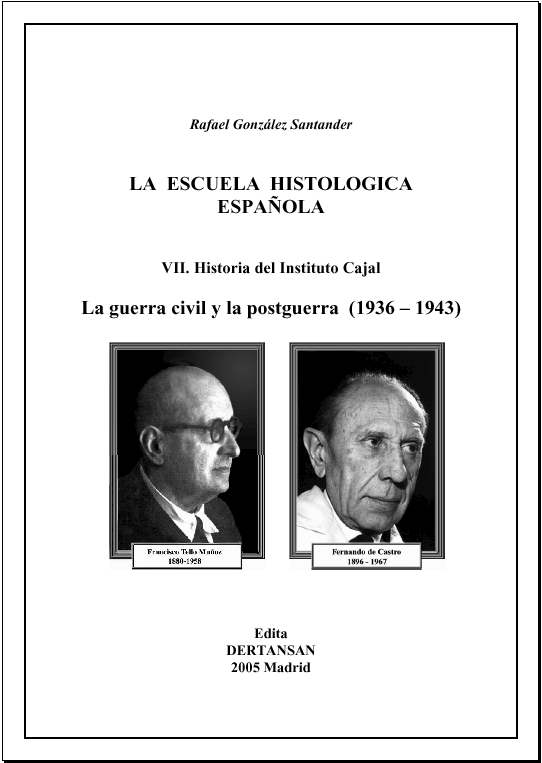DANNY G MCBETH RECREATION CENTER HISTORIC RESOURCE INVENTORY &
ARIZONA STATE UNIVERSITY—EAST STUDENTS AND EXERCISES DR DANNY PETERSONCMI INTERNATIONAL GROUP PREPARÁNDOSE PARA NEGOCIAR POR DRS DANNY
DANNY G MCBETH RECREATION CENTER HISTORIC RESOURCE INVENTORY &
DANNY THE DRIP TEACHER NOTES EQUIPMENT CLEAR CONTAINER OF
EFFICIENT PROTOCOLS IN COMPLEX NETWORKS DANNY DOLEV (HEBREW UNIVERSITY)
IM GOING TO DESCRIBE DANNY ROMERO DANIEL RAMÍREZ ROMERO
History—The Zilker Botanical Garden and Austin Area Garden Center
Danny G. McBeth Recreation Center Historic Resource Inventory
& Assessment of Significance
History—Danny G. McBeth Recreation Center
Preliminary Findings
Description—McBeth Recreation Center
The McBeth Recreation Center in Zilker Park comprises two late 1950s International Style one-story brick masonry buildings and several significant landscape features that contribute to the cultural landscape of the site. The complex previously housed a local council and state chapter of the Knights of Columbus, a fraternal Catholic organization, and was acquired by PARD in the 1980s and 1990s for use as a recreation center. Danny G. McBeth was known for his advocacy of rights and services for the disabled community and the complex was named for Mr. McBeth in… (Cite date with primary source). McBeth Recreation Center is fully accessible and provides programs targeting the public at large, as well as the physically-challenged.
The buildings are stylistically influenced by the International Style, a later phase of the Modern Movement. Both buildings are characterized by minimal exterior decoration, wide eave overhangs, flat roofs, and exposed supporting beams. The buildings are both constructed of reinforced concrete and brick. The site is a heavily wooded area with a dense live oak canopy and is located in the southwest portion of Zilker Park. It is bounded by Loop 1 (Mopac Expressway) to the northeast and Columbus Drive (park road) along northeastern boundary. Kaycee Drive (unmarked) bounds the eastern portion of the complex. The southern portion of the site is not bounded by roads, but rather by the southern, wooded edge of Zilker Park.
The buildings and site that comprise the McBeth Recreational Complex retain a moderate to high degree of integrity. Both buildings are in their original location and the setting is intact with little change to the site plan. The plan of the site, building orientation and the relationship between the built and open spaces is unaltered. The original building materials are intact and there have been few structural alterations and no additions. The workmanship of buildings is high. Despite no longer serving its original function, the site evokes a feeling and association with its 1950s construction period and to its original tenants, the Knights of Columbus. The Knights of Columbus (K.O.C.) State Council #1017 Building (McBeth Main Building) was listed in the 1997 Zilker Park National Register Historic District nomination as “non-contributing.” The K.O.C. Texas State Council Building (McBeth Main Building) was not included in the nomination as it had not been acquired by PARD at the time of the nomination.
The Knights of Columbus Texas State Council Building (McBeth Annex) was designed in 1959, by the Austin architectural firm of O’Connell and Probst. The building was completed in May, 1960. O’Connell and Probst designed many institutional buildings in Texas throughout the 1950s and 1960s, including hospitals in Graham, Sherman, McKinney, Amarillo and New Braunfels and schools, such as Webb Hr. High School in Austin. The principal alterations consist of the replacement of the entry door and the removal original signage. Original features still intact include a glass mosaic tile wall with an inlaid Knights of Columbus crest (get size of wall) and brise-soleil wall of decorative perforated brick, likely Elgin Butler solar screen tile, that projects out from the center of the façade. The interior of the building is characterized by original terrazzo floors and several rooms with original wood paneling. The floor plan is rectangular in its footprint and consists of a main lobby with an offset hallway flanked by (get number) rooms. The one-story building is faced with bricks in varying colors from blond to light red. The building’s horizontal emphasis is further pronounced by a flat roof that projects over the front façade and a planar brick brise-soleil wall that extends beyond the building. A single wooden entry door is flanked on one side by large plate glass windows and transoms.
The Knights of Columbus State Council #1017 Building (McBeth Main Building), constructed in 1958, retains a high level of integrity with no significant alterations. With an emphasis on horizontality, the building’s flat roof projects from the front façade over the entry door forming a porte-cochere. A large brise-soleil wall of decorative perforated brick supports the porte-cochere, one of the building’s original features. The roof structure of the main building consists of panels of cast concrete I-beams that project outward to form a porte-cochere. The floor plan consists of a main lobby that opens onto an internalized courtyard. The building is square in shape. A large auditorium flanks the courtyard on one side and a hallway travels down the opposing side of the courtyard. The back portion of the building contains one large meeting room, which leads to the courtyard. Smaller offices project off the large meeting room. Another original feature is a large brick barbeque pit is situated in the rear of the property and dates from the occupancy of the Knights of Columbus.
Cultural Landscape Features
The buildings are sensitively set into this landscape, which also has an asphalt parking lot with little to no curbing. Other features include a portion of the parking lot with limestone flagstone. The entry driveway to the site is flanked by two piers dating from the presence of the Knights of Columbus. Finally, a large red brick barbeque pit is situated behind the main building and dates from the time of the Knights of Columbus.
Assessment of Significance
The late 1950s McBeth Recreation Center and its buildings and site served as the headquarters of the Knights of Columbus State Council from 1960 through ? and the headquarters of the Knights of Columbus Council #1017.
Using the City of Austin Criteria for City Historic Landmark Status, the complex, including the buildings, meets the following criteria:
1. Character, interest or value, as part of the development, heritage or cultural characteristics of the City of Austin, State of Texas, or the United States.
3. Embodiment of distinguishing characteristics of an architectural type or specimen.
5. Embodiment of elements of architectural design, detail, materials, or craftsmanship which represent a significant architectural innovation.
6. Relationship to other distinctive buildings, sites, or areas which are eligible for preservation according to a plan based on architectural, historic, or cultural motif.
9. Exemplification of the cultural, economic, social, ethnic, or historical heritage of the City, State, or the United States.
12. A building or structure that, because of its location, has become of value to a neighborhood, community area, or the city.
13. Value as an aspect of community sentiment or public pride.
Using the National Register Criteria, the complex meets the following criteria:
Criterion A in the areas of Social History at the state and local level of significance due to its major association with the Knights of Columbus, an important Catholic fraternal organization.
Criteria C in the area of Architecture at the local level of significance for its International Style architecture.
NOTE: WILL ELABORATE MORE ON SIGNIFICANCE
Recommendations
Knights of Columbus
The Knights of Columbus occupied the buildings and site that currently houses the McBeth Recreation Center for 25-30 years. The McBeth Annex, formerly the Texas State Council Building, included a large statue of Fr. Michael J. McGivney, the founder of the Knights of Columbus, which was relocated several years ago and a public art installation will take its place. The presence of the Knights of Columbus can still be seen in the mosaic tile wall on the façade of the Annex, the entry piers at the base of the driveway and the large brick barbeque pit that sits behind the Main Building. These vestiges add to the character of the site and buildings. Because they date from a significant period of the buildings and site, they should be retained and maintained. Their presence contributes to a sense of historical continuity and should not affect the ability of PARD to distinguish the site as a PARD facility.
Repair the glass tile wall and use appropriate signage
The glass mosaic tile wall with the mosaic of the Knights of Columbus crest is one of the most significant features of the Annex Building. As a major character-defining feature of the building, the wall should be repaired and any future signage should replicate the signage that would originally been on the wall. EXPLORE FOGEL CONNECTION
Maintain the wooded character of the site
The wooded site of the McBeth Recreation Center Complex is distinctive and should be recognized and maintained. The limestone flagstone crosswalk in the parking lot should be maintained. Currently, the sidewalk area in front of the McBeth Annex appears to have been sensitively designed with a poured concrete perimeter in lieu of curbing resulting in less disruption of the original site layout. This thoughtful design maintains the tucked in, wooded character of the site.
Restore original features of the buildings
The two 1950s buildings that house the McBeth Recreation Center complex are excellent examples of mid-century International Style architecture. The buildings are more than 50 years old and have achieved historic status based on commonly accepted historic preservation standards. 1950s architecture is generally quite threatened as it is commonly not recognized as old enough to be significant. As caretakers of these two historically significant buildings, PARD should consider restoring some key original features of the building. In particular, the original door on the McBeth Annex building. Further research may uncover more historic photographs to aid in identifying some of the buildings’ original features.
Appreciation for mid-century architecture
The recognition of mid-century architecture is gaining strength with the establishment of several key organizations. The National Trust for Historic Preservation, the country’s largest nonprofit preservation organization, created TrustModern with a mission to “to change how we view, steward, and preserve the architectural and cultural heritage of the recent past before more landmarks are lost.” On a more local level, a central Texas chapter of DOCOMOMO (Documentation and Conservation of the
Monuments of the Modern Movement) was established to identify and protect mid-century architecture from the middle of the twentieth century.
IN OPS ROOM JOHN GENE DANNY DAVID ARV ESSAM
MEDIDAS DE POSICIÓN CENTRAL DANNY PERICH C LAS MEDIDAS
TITLE FIREFIGHTING CONSIDERATIONS FOR ELECTRIC VEHICLES TESLA INSTRUCTOR DANNY
Tags: center historic, recreation center, center, historic, inventory, recreation, danny, resource, mcbeth
- EXPERIENCIA DE EDUCACIÓN FAMILIAR COMUNITARIOPERSONALISTA DR SALVADOR PEIRÓ I
- PSBKPPLSBK23 BAHAGIAN KESIHATAN PERGIGIAN NEGERI PERLIS BORANG KAJI SELIDIK
- CONVENTION DE COLLABORATION DANS LE CADRE D’UNE OPÉRATION DE
- ŠIAULIŲ MIESTO LIETUVIŲ KALBOS MOKYTOJŲ METODINIO BŪRELIO VEIKLOS PLANAS
- RESOLUCIÓN NO DEL HOJA NO 11 DE 11 “CONTINUACIÓN
- MASSIMO ESPOSITO INFORMAZIONI PERSONALI NATO A ROMA IL 07111980
- ORD Nº 178171 MATERIA DIRECCIÓN DEL TRABAJO COMPETENCIA INSTRUMENTO
- DEVELOPMENT OF AN INTEGRATED REGIONAL CHEMICALS AND WASTE INFORMATION
- 5 HEALTH EDUCATION 9 BREASTFEEDING METHOD TIME
- 3 ASUNTO ENTREGA DE PRIMER MATERIAL CONTRATO PS4037 CRISTINA
- DELOVNI VZOREC ODLOČBA O ZAVRNITVI ZAHTEVE ZA DOSTOP DO
- 20172018 SÚKROMNÁ STREDNÁ ODBORNÁ ŠKOLA BUKOVECKÁ 17 KOŠICE ŠKOLSKÝ
- 52003 (II 19) ESZCSM RENDELET A MAGASABB ÖSSZEGŰ CSALÁDI
- MODEL CONTRACT SUBSECVENT NR … ……………… LA ACORDUL –
- BEYER MICROPHONE CLAMPS M KV 8911 VIRTUALLY INDESTRUCTIBLE MICROPHONE
- PIĄTEK 29 MAJA 2020 PONIEDZIAŁEK 1 CZERWCA 2020 LOGOPEDIA
- 62 CENTRO DE EDUCACIÓN PERMANENTE “ALMADÉN” (LA MAGDALENA JAÉN)
- Science Labinvestigation Report Rubric Name Excellent 4
- LÜTFEN BU FORMU YAZDIRIP IMZALADIKTAN SONRA 0212 238 44
- 8 OSZTÁLY 1 FELADATLAP TITOK TÖRTÉNELEM VERSENY KÓD
- 6 MAJ 2018 6 VELIKONOČNA NEDELJA LETO B
- 8TH GRADE LANGUAGE USAGE VERBALS 3 NAME QUESTION 1
- ALTERNATIVE LEARNING PACKET APPROVAL REQUEST FORM ALTERNATIVE LEARNING PACKETS
- S EÑOR APODERADO INFORMAMOS A USTED FECHAS Y CONTENIDOS
- 25 JAVIER RODA ALCAYDE TEMA 28 ACTUALIZACIONES PARA TEORÍA
- PRAVILNIK O JEDINSTVENOM REGISTRU PRAVNIH SUBJEKATA UPISANIH U KNJIGU
- MAG MARCELA BATISTIČ ZOREC INTERNO NELEKTORIRANO GRADIVO DECEMBER 1999
- NAME HOUR PNF STRETCHING LAB INTRODUCTION
- 8 KLASA I WYMAGANIA DZIAŁ WIADOMOŚCI WSTĘPNE P UCZEŃ
- ANEXO D COMPROMISO DEL INVESTIGADOR DONDOÑA …………………………………………………………………………………… HACE
1 5 10 15 20 25 30 35 DOMNA
9 EXPEDIENTE Nº 57127 TD Nº 15268760 OPINIÓN Nº
 PROMOTIONSFÖRDERUNG FRAGEBOGEN FÜR BEWERBERINNEN SEITE 12 1 ANGABEN ZUR
PROMOTIONSFÖRDERUNG FRAGEBOGEN FÜR BEWERBERINNEN SEITE 12 1 ANGABEN ZURDIRECTIVA DE TESORERÍA Nº 2009MPCHA DIRECTIVA PARA LA APERTURA
 FORMACIÓN INICIAL PARA PRIMARIA COMUNITARIA CUADERNO DEL INSTRUCTOR FORMACIÓN
FORMACIÓN INICIAL PARA PRIMARIA COMUNITARIA CUADERNO DEL INSTRUCTOR FORMACIÓNBORIS ONDREICKA BORN SEPT 6 1969 ZLATE MORAVCE SK
 PROLOGO LA GUERRA CIVIL HA SIDO EL HECHO
PROLOGO LA GUERRA CIVIL HA SIDO EL HECHO 60 BAB II LANDASAN TEORI 21 TINJAUAN UMUM KULINER
60 BAB II LANDASAN TEORI 21 TINJAUAN UMUM KULINERNOTA ACLARATORIA AL PLIEGO DE CLAUSULAS ADMINISTRATIVAS PARTICULARES PARA
SMLOUVA O DÍLO Č 00120050230 UZAVŘENÁ PODLE § 536
 CORRIENTE CONTINUA (I) CONCEPTOS BÁSICOS IES LA MAGDALENA AVILÉS
CORRIENTE CONTINUA (I) CONCEPTOS BÁSICOS IES LA MAGDALENA AVILÉS BILLING CODE 481025 DEPARTMENT OF THE TREASURY DEPARTMENTAL
BILLING CODE 481025 DEPARTMENT OF THE TREASURY DEPARTMENTAL CONTROL DE PQRS CÓDIGO INGC05 VERSIÓN 01 FECHA ELAB
CONTROL DE PQRS CÓDIGO INGC05 VERSIÓN 01 FECHA ELAB CNS FREQUENCY MANAGER INSTALLATION AND USER MANUAL UPDATED 238
CNS FREQUENCY MANAGER INSTALLATION AND USER MANUAL UPDATED 238SINDIKAT STROJEVODIJ S L O V E N I
BETTER BUSINESS 2E (SOLOMON) CHAPTER 6 FORMS OF BUSINESS
 UNIVERSIDAD DE CHILE FACULTAD DE CIENCIAS SOCIALES ESCUELA DE
UNIVERSIDAD DE CHILE FACULTAD DE CIENCIAS SOCIALES ESCUELA DE ANEXO 1 ESTRUCTURA FORMATO EDIFACTIFTMCS CABECERA DE INTERCAMBIO (1)
ANEXO 1 ESTRUCTURA FORMATO EDIFACTIFTMCS CABECERA DE INTERCAMBIO (1)RESOLUCIÓN TÉCNICA N° 39 – INTERPRETACIÓN N° 8 FACPCE
 VOLUNTARY DISCLOSURE OF POTENTIAL CONFLICT OF INTEREST1 FOR USE
VOLUNTARY DISCLOSURE OF POTENTIAL CONFLICT OF INTEREST1 FOR USE